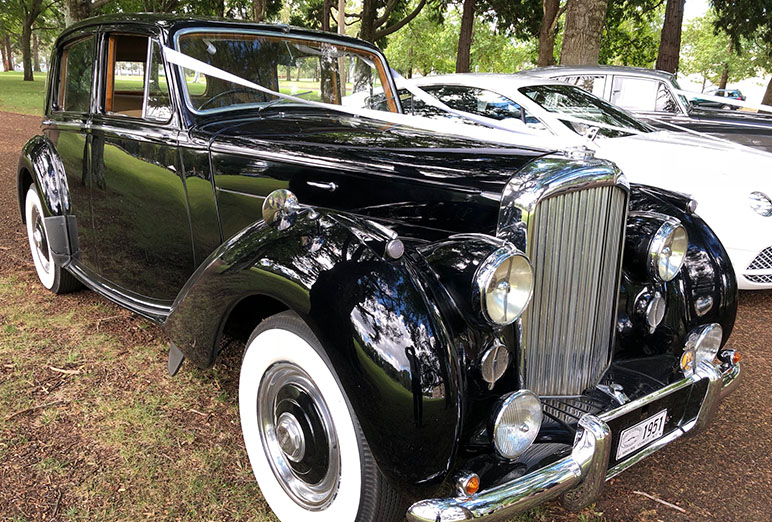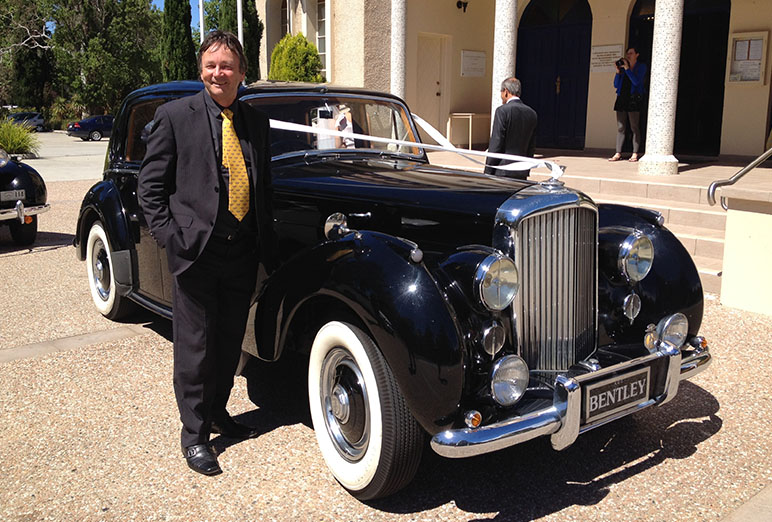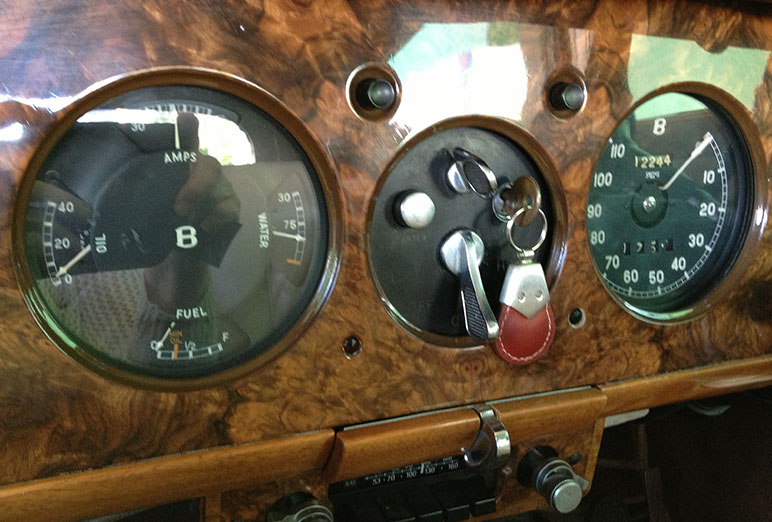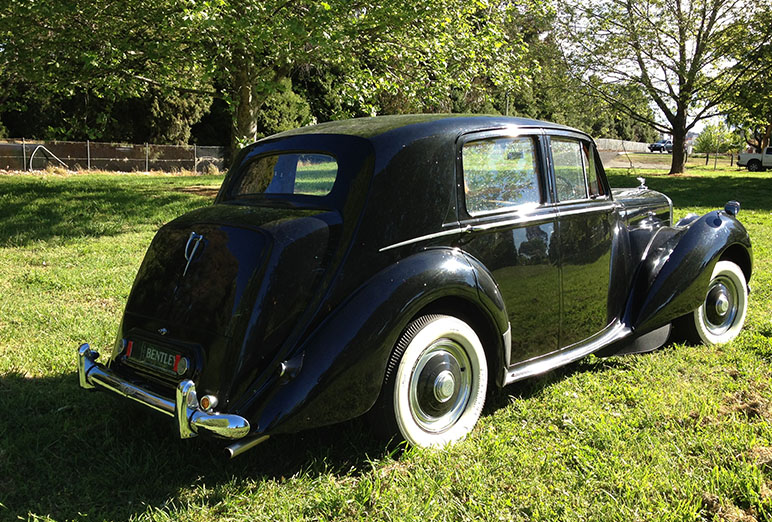Bentley MkVI Standard
cfit
2018-04-05T11:32:53+10:00
The Mark VI 4 1⁄4-litre used an F-head straight-6 engine 4.3 L (4,257 cc/259 cu in) in size. The manufacturer refused to disclose a horse power value for the car (other than Tax Horsepower of 29.4 hp according to the old RAC formula) but an Autocar Magazine road test reproduced in 1950 reported that top gear provided “flexibility down to 6 mph (10 km/h)” and the ability to “climb a hill of 1 in 9 maximum gradient, complicated by bends”,[7] all of which supported the manufacturer’s contention that power, along with low speed torque, were adequate.
In 1951, a 4 1⁄2-litre, 4.6 L (4,566 cc/278 cu in) version of the engine was introduced and then referred to as the big bore engine. A four-speed syncromesh manual transmission was fitted with the change lever to the right of the driver on right hand drive cars and on the column on left hand drive versions.
4 1⁄4-litre cars had chassis numbers from B 1 AJ through B 400 LJ, with the final two letters indicating the series in which it was built. The “big bore” cars serial numbers begin with B 1 MB (although B 2 MD was the first big bore Mark VI built) and ended with B 300 PV (although B 301 PU was the last one built). Each alphabetic series only contained either even or odd numbers, and 13 was always skipped for the odd-numbered sequences.
The 4.3 L was referred to as the 4 1⁄4 L and can be quickly identified from its single exhaust. The 4.6 L is known as the 4 1⁄2 L and features a twin exhaust.
Chassis and running gear
The chassis used leaf springs at the rear and independent coil springing at the front with a control on the steering wheel centre to adjust the hardness of the rear springing by hydraulically adjusting the rear dampers. A pedal-operated central lubrication system allowing oil to be applied to moving parts of the suspension from a central reservoir was fitted. The 12.25 in (311 mm) drum brakes were assisted by the traditional Rolls-Royce mechanical servo.
Standard Steel Saloon
Employing its experience with the steel bodies made in short runs since 1936 by then partly-owned subsidiary Park Ward the Car Division of Rolls-Royce offered their lowest priced chassis with a factory-supplied body all-steel so it could be exported all over the world. The factory bodies with a Gurney-Nutting–Blatchley refined shape were made by Pressed Steel Ltd of Cowley and sent to the Bentley works at Crewe for painting and fitting out with traditional wood and leather. They featured rear hinged “suicide” doors at the front with concealed hinges, a sliding sunroof, a permanently closed windscreen with a defrosting and demisting unit hidden in the scuttle and an electrically controlled heater beneath the front passenger’s seat. Twin screenwipers were fitted and provision was made for the fitting of a radio with a short and flexibly mounted aerial that could be swung up above the centre of the screen.
Bentley Continental
A Mark VI chassis (at first referred to within the works as Corniche II) was developed by H I F Evernden and J P Blatchley in 1950 and 1951 carrying a larger engine with a higher compression ratio and modified fuel and exhaust systems, a close ratio gearbox and much higher final drive ratio.
By special arrangement with Bentley 2-door bodies were fitted having a lower frontal area and of significantly lighter construction, the first – made by H J Mulliner – developed in conjunction with Evernden and Blatchley. The first still luxurious car was more than 10% lighter than the standard car. They were the most expensive production cars in the world and the world’s fastest 4/5-seater saloons.
These chassis were produced between June 1952 and April 1953 and bear the chassis numbers BC1A to BC26A, with the prototype, totalling 27 cars. The engine compression was reduced on the last 8 cars. The bulk of the chassis were clothed by H J Mulliner but some were bodied in Europe. Only the 27 cars were built before the R designation was added to the chassis series identification.










